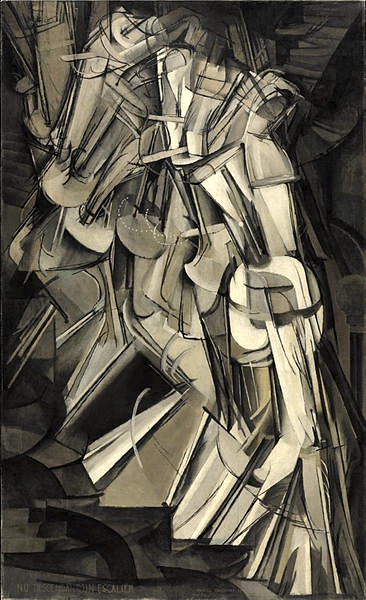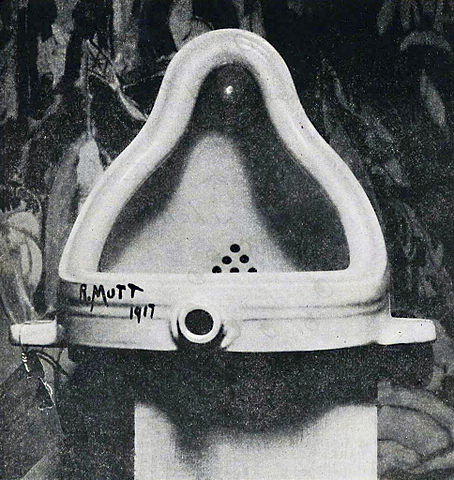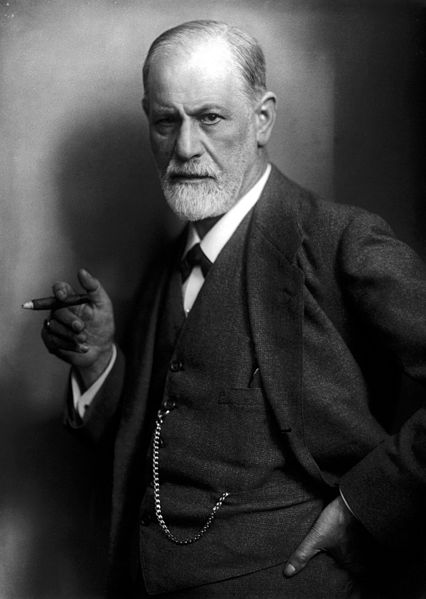
The Crystal Palace burning down, 1936
The first half of the twentieth century was awful. Not just materially; Western systems of meaning—social, cultural, and psychological—were falling apart. The glorious accomplishments of the systematic era could not hold civilization together, and seemed likely to be lost entirely in a global conflagration.
Many people even came to think those systems were the cause of all the catastrophes. We who live in the aftermath—we who have never experienced an intact system—we cannot fully appreciate how awful that loss of meaning felt.
This page analyzes the first phase of meaning’s disintegration, roughly 1914–1964. It should help explain the new positive alternatives offered by the countercultures and subcultures, which came next, and also why those failed.
All the events I recount will be familiar, but the way I relate them to my central themes of eternalism and nihilism, and to problems of meaning in the domains of society, culture, and self, may seem novel.
We still have no adequate response to these issues. Any future approach—such as fluidity—must grapple with problems that first became obvious in the early twentieth century.
Society in crisis

Lenin addressing a crowd, 1920
The period was marked by two social crises: class conflict and world wars. The systematic ideologies that were supposed to resolve these horrible problems seemed, by the end, to have made them worse, or even to have been their principal causes.
Greatly increased division of labor during the 1800s created numerous specialized occupations. This drove great advances in the standard of living and enabled increasing cultural sophistication. However, it also created psychological alienation (discussed below) and social conflicts. The existing social system, which had been stable for hundreds of years, functioned only in an agrarian economy of peasants, aristocratic landowners, and a small class of skilled craftspeople. It had no way of accommodating the newly created classes, such as urban industrial workers and entrepreneurial commoners—who sometimes became richer and more powerful than most aristocrats.
Theorists proposed new systems of social organization: nationalist, socialist, democratic, totalitarian. Advocates made supposedly-rational arguments for why each was right; yet supporters mostly just chose the system that might benefit their in-group against others. Conflicts between them tore societies apart, often even into civil war.
Different countries tried each of the new systems, and all produced vast disasters:
- nationalism led to World War I;
- capitalism caused the world-wide Great Depression;1
- fascism was to blame for World War II;
- communism killed tens of millions with engineered famines and the mass murder of supposed dissidents.
WWI marked the end of naive faith in the systematic mode. Most countries went into the war confident of quick victory, confident of its necessity and ethical rightness, confident that war was an opportunity for glory, heroism, and unity. God was on our side.
For Europe, it was the first industrial war,2 with the new social and mechanical technologies of mass production turning out deaths instead of automobiles. Four years later, after tens of millions of casualties, extraordinary horror and suffering, the traumatized survivors asked not “was it worth it” but “what was that all about, anyway?”
In retrospect, WWI seemed completely pointless. Or, if it had any meaning, it was to point out that the pre-war systems of meaning must have been disastrously wrong. The 1800s had seemed an era of rapid moral progress as well as economic and scientific progress. That was no longer credible. This disillusionment increased support for alternatives, including socialist internationalism, fascism, explicit anti-modernism, and explicit nihilism.
One pointless, catastrophic world war might be a tragic accident. To fight another, even worse one—the worst human-created disaster ever—just twenty years later, goes beyond carelessness. When the victors of WWII immediately began preparing to fight WWIII among themselves—this time with potentially billions of deaths from nuclear weapons—it was widely regarded as a bad idea. Yet Cold War belligerents on both sides felt justified by their systems of meaning: benevolent socialist internationalism versus benevolent liberal democracy.
Systematicity itself was a major cause of the catastrophe. Leaders and peoples took their rational ideologies far too seriously, and acted on flawed theoretical prescriptions.
Why did they choose not to see the systems were failing? Eternalism. The only alternative to blind faith in the system seemed to be nihilism.
From the standpoint of each ideology, the others looked nihilistic:
- For democratic capitalism, communism and fascism looked nihilistic in denying civil and human rights and the ultimate value of the individual.
- For communism, capitalism and fascism denied the ultimate value of solidarity—the brotherhood of all—and the economic rights of the working class.
- For fascism, the economic focus of communism and capitalism denied all values other than material ones. They denied the ultimate value of nation-state-ethnicity. They subordinated the noble, high culture of the elite to the vulgar, degenerate culture of the rabble.
Any relaxing of the defense of the system could only lead to the nihilist apocalypse. And, indeed, many thought the World Wars were the nihilist apocalypse—although in reality they were caused far more by eternalism than nihilism. On the other hand, a few thinkers started to suspect that it was systems as such that had been the problem. Among these were forerunners of the countercultures, such as the existentialists and Beats.3
Culture in crisis

Art falling apart.
Marcel Duchamp, Nude Descending a Staircase, No. 2, 1912
(a/k/a “Explosion in the tile factory”)
While the systematic mode worked—up to WWI—the role of “high” culture was to express and reinforce the values of the system. Great art was, by definition, morally improving. The arts tried to be pure, inspiring, and uplifting. They provided an idealized vision of the smooth workings of meaning as it was meant to be.
High culture expressed the sacred eternal values of the elites—the “bourgeoise”—who were its patrons. Popular culture sometimes ignored or mocked elite values; but that was ephemeral rubbish.
Starting in the late 1800s, and accelerating after WWI, artists flipped all that on its head. High art began instead to expose the cracks in the system. It articulated the widely-felt sense of disintegration, of loss of certainty. It spoke to the anxiety, confusion, and even horror that came from the failure of all foundations; but also the freedom and joy that came with liberation from eternalism.4
Artists, in all media, systematically rejected past artistic systems, and the rational structures that justified them.5 Painters rejected geometrical perspective, the great achievement of Renaissance art. Composers rejected tonality, which had been the foundation of music for several centuries, and experimented with severe dissonances. Writers abandoned grammar, punctuation, prosody, sense, and all other “restrictive” forms.
At the extreme, the arts became entirely anti-sense, incoherent, or explicitly nihilistic. (This anticipates the incoherence of the atomized mode most of a century later.) Artists hurled globs of paint at a canvas; composers arranged notes by rolling dice; writers cut individual words out of a book, shook them up, pulled ones out at random and called the result a poem. Beyond even this random art was anti-art—seeming to be outright nihilism. An empty picture frame declared to be a painting; John Cage’s four minutes and 33 seconds of silence declared to be music; a blank page, a poem. Tristan Tzara, a key theorist, wrote “I am against systems; the most acceptable system is on principle to have none” and “logic is always false.”

Is this art? How can you tell?
(Marcel Duchamp, Fountain, 1917)
High art also increasingly rejected all existing social systems. Biting the hands that fed it, it adopted the attitude épater la bourgeoisie: scandalize polite society!
The new job of art was not to uplift, but to overthrow. Eventually, you could not be a serious artist unless you constantly proclaimed your contempt and hatred for the middle and upper classes, for capitalism, for Victorian morality, for religion, for any sort of taboo or restriction. To be an artist was by definition to be a revolutionary. Simply maintaining an oppositional attitude became sufficient; art and social critique became inseparable.
Popular and high art now changed places. The middle and working classes had growing spending power, and entrepreneurs discovered that popular culture could be profitable. Commercial culture came to represent the “traditional values” of the systematic mode, where high art—the avant-garde—satirized and undermined them. Theorists proclaimed that all popular art was just kitsch—the cultural expression of eternalism.
Here began the “culture war,” which became particularly important in the countercultural mode.
The self in crisis
Charlie Chaplin, Modern Times, 1936
Systematic society required, and made partially possible, systematic selves. Systematic persons were rational individuals who conformed to, and enforced, systematic social values. This advance began breaking down in the first half of the twentieth century, due to systematicity’s harmful side-effects. Its requirements came to seem oppressive, meaningless, and for some, impossible. Selves fractured and broke under the stress.
Work in the industrial economy felt dehumanizing. Extreme division of labor made most people tiny, interchangeable cogs in a vast, incomprehensible, relentless machine. The functioning of the economy as a whole became opaque, so it was impossible to see the meaning of one’s own work, and the system’s demands seemed senseless. And, indeed, working conditions often were not only awful, but pointlessly awful.
Urban, industrial social organization increasingly alienated people from each other and from nature. The systematic self—based on a rigorous self/other boundary—made this worse, and even separated people from their own everyday experience. It became possible, for the first time, to feel lonely and isolated while in a crowd.
The mid–1800s introduced a new “Victorian” sexual morality and a new culture of the family. These addressed genuine social problems with some success. In the absence of reliable contraceptive technology, and limited food production, sexual restraint lessened the rate at which children died of starvation. The new concept of a private home life developed partly as refuge from the stresses of the work world, and was closely analogous to the new enclosed interiority of the systematic self.
However, these innovations also caused stress and misery for many people. For example, England had large, persistent surpluses of women, making it mathematically impossible for all to conform to the demand that they marry. Many people (men and women, adults and children) found the regimented ideology of duty-filled family relationships an onerous grind at best, and in some cases intolerable. Yet they were nearly inescapable. The newly private nuclear family could also conceal pathology and abuse that earlier, more open extended families might have successfully intervened in.
Increasing social complexity requires you to act as several different people in different places. Some of those partial-selves are false fronts; others may seem natural. If your personality is quite different at work and at home, which is the real you?
Ecstasy is the natural antidote to the sense that administering the systematic self—holding everything together—is exhausting. Choiceless cultures periodically celebrate with joyful non-ordinary states of consciousness, produced by community ritual, intoxicants, and relaxation of social role norms. Systematic cultures deliberately banned these as threats.6 Even this temporary escape route was cut off.
Many people began to ask: Why? For what? Given the rigidities of the system, even the best possible life outcomes would be quite unsatisfactory for most people. The restrictions seemed arbitrary, unnecessary, and unfair. When you ask “why?”, a system is supposed to always have an answer; but as the twentieth century staggered from crisis to catastrophe to breakdown, religious and political platitudes no longer seemed adequate. Rationalist certainty had also collapsed. Justifications based on abstraction and generality are sterile; when the systems they support are visibly failing, they come to seem meaningless.
In the anxiety of relativism, as eternalism disintegrates, one doubts everything. Yet the system has to reject doubters. They are criminal, mad, degenerate, lazy, undesirable; and punished or cast out accordingly. What then? Perhaps I am mad? Or a criminal? Perhaps “good” and “evil” no longer have any meaning? Perhaps meaning itself is impossible…
And so there developed new words for problems of the self, reflecting the new possibility of nihilism:
- Alienation, in the mismatch between social roles and internal experience
- Anomie, the feeling that social norms have broken down and become irrelevant
- Neurosis, theorized to be caused by failure to adapt to stifling social requirements
- Identity crisis, the feeling of loss of any meaningful self
- Existential angst, the feeling accompanying nihilistic doubt
Many people adapted easily enough to systematic requirements, and constructed reasonably functional systematic selves. Others found it difficult, and were miserable; some failed altogether.7 In breakdown, the self is experienced as fragmented, incoherent, and hostile to itself.

Freud’s enormous influence during the first half of the twentieth century was due to his pioneering explanations—however incomplete and incorrect—of these problems.
A fully systematic self, he argued, is biologically impossible. The ideal of the self as the rational chief of a smoothly functioning internal bureaucracy is unrealizable. Not only is the self not an in-dividual, it is always actually divided. Most of what happens inside ourselves we cannot even know about: it is unconscious. The ego—what we most think of as self—is a hapless clown, caught between vastly more powerful forces.
The monstrous, irrational, amoral, chaotic id mainly does as it pleases; then the tyrannical, persecutory superego punishes us for desires and acts beyond our control, inducing constant anxiety and guilt. The ego’s mechanisms of defense against them, such as repression, denial, regression, and projection, are themselves mainly violent failures of rational self-management. They mirror the mechanisms of social oppression.
Civilization and Its Discontents (1930), perhaps Freud’s most influential work, argued that because the conflict between social demands and individual desires was unavoidable, deep dissatisfaction was inescapable. The best we can hope for is to “replace neurotic misery with common unhappiness.”
Despite this profoundly gloomy conclusion, psychoanalysis functioned as a para-religion for millions of people. As a system for making sense of meaning in all its dimensions, it often fit lived experience better than Christianity.
During the middle of the century, psychoanalysis evolved away from orthodox Freudianism, in several productive directions. Object-relations theory recognized that relationships had great human value, not just instrumentally but intrinsically. It also developed more sophisticated and accurate understandings of the internal structure of the self and its fragmentation. Psychoanalysis also hybridized with existentialism, arguably deepening each. Both hybridized with Marxism, producing trenchant new analyses of the failures of the systematic mode, and suggesting new revolutionary possibilities. These were a major impetus for the 1960s–70s counterculture.
Responses: totalitarianism and existentialism
The main alternative, while all systems were failing, appeared to be nihilism—the end of meaning. However, two other responses developed during 1914–64: totalitarianism and existentialism.
These had some of the characteristics of countercultures, as I’ll define them on the next page. Both proposed alternatives to the failing mainstream, and were often anti-rational.8 Each contributed to counterculturalism: existentialism especially influenced the monist counterculture, and totalitarianism the dualist counterculture.
Totalitarianism
By “totalitarianism” I mean attempts to make a system work by force. (This is not quite the standard definition, but it’s close.) This includes fascism, actually-existing communism,9 and theocractic fundamentalism.
Totalitarianism is now mostly discredited in the West, so it’s important to understand why it made sense in the mid-twentieth century—and why it still makes sense to billions of people elsewhere.
Any serious system has a network of justifications that answer all “why” questions—not perfectly, but well enough for most people most of the time. So it ought to work. Moreover, systems mostly did work, for several centuries. Even in the 1950s, many liberal Western economists and political scientists considered that the Soviet bloc had an unfair advantage, because its leaders could simply order everyone to do what had to be done. They favored democratic institutions on ethical grounds, but believed that communism was more efficient economically—so the West might be doomed. (It wasn’t until the 2000s that the reasons non-systematic economies outperform started to be commonly understood.)
Like all eternalism, totalitarianism is based on the fantasy of control; it promises salvation if you conform to the dictates of the system. That promise is enormously appealing, and explains why Hitler, Stalin, and Mao had broad popular support—and why Islamic fundamentalism has broad popular support now.
The totalitarian intuition is that society would work if everyone just did what they were supposed to. And this is largely correct. Despite nearly opposite ideologies, Norway and Singapore are now among the highest-functioning countries in the world, because there is a general agreement among their citizens to do the right thing. In low-functioning countries, there is a de facto agreement to ignore pro-social norms in favor of personal or clan advancement. So why not just make everyone behave?
Totalitarianism’s flaws become apparent when it collides with nebulosity. It then uses all the eternalist ploys to maintain allegiance in the face of failure. Most obviously, totalitarianism is armed and armored to restore order by force. This requires purification, eventually by killing everyone who impedes the operation of the system (kulaks, Jews, apostates, profiteers, perverts, oppressors, idolators, elitists, degenerates, running-dog capitalist-roaders, intellectuals, counter-revolutionaries, etc.). Totalitarian leadership is typically addicted to magical thinking and pretending to believe. For the masses, they encourage thought suppression and kitsch.
Speaking of kitsch, all totalitarian movements see it as job one to suppress and destroy avant-garde art.10 Avant-garde art points to nebulosity and mocks systematicity—as such, not just specific systems. The Soviets declared it “counter-revolutionary,” and made “socialist realism” the only legal style. (That was state-worshipping propaganda kitsch in a style crudely imitating late–1800s Academic painting.) The Nazis declared the avant-garde “degenerate,” “nonsensical,” and “Jewish,” and banned it in favor of their own Classically-inspired propaganda kitsch. Nowadays, fundamentalists preach against it, ban it where they can, and promote religious kitsch.
In the social realm, I mentioned two problems: class conflict and world war. Totalitarianism deals with the first by banning it. (That was easy, wasn’t it? If you kill everyone responsible for class conflict, it will just go away.) Totalitarians love world wars—eternalism deludes them that they are fated to win and establish a global Soviet / Reich / Caliphate11—so that’s not a problem either.
Totalitarianism requires a self that is systematic but transparent. Choiceless selves—embedded in local community relationships—cannot conform to the will of a national or global system. Individuals—who have a private mental realm—may choose to resist the system, or hide dissenting thoughts from the system. The totalitarian self must be submerged in the State, or surrendered to God, renouncing personal boundaries. That is attractive, for many people, by relieving them of the burdens of choice. (Eternalism simulates choicelessness.) However, complete surrender is impossible to accomplish, which is one reason totalitarianism has not been more successful.
Existentialism
Existentialism rejected all systems of meaning in favor of choosing personal meanings. I’ve analyzed that extensively earlier in the book,12 so here I’ll say only a little.
Systematic eternalism tries to make meaning objective. During the twentieth century, this became obviously unworkable. Many saw nihilism as the only possible alternative, but (rightly) considered it unacceptable. Existentialists tried to create a third possibility: that meaning could be subjective rather than objective. In fact, they said, “authentic” meaning had to be subjective: a purely individual choice or creation, without any justification. They claimed that perfect internal freedom of choice made this possible, whatever the external circumstances.
This can’t work. Meaning is a collaborative activity. It is neither objective nor subjective. It is created by interaction, and abides in that space-between. Also, we do not have perfect internal freedom. Selves are constituted by biology and by society and culture. People cannot become ideal independent rational agents with perfectly-crisp boundaries and unlimited free will.
Bizarrely, while advocating total rejection of social values, several of the most important existentialists also advocated totalitarian social systems. For example, Heidegger supported Nazism and Sartre supported Soviet communism. Camus, last and best of the existentialists, was left to diagnose both its failure modes. He explained how purely subjective meaning slides into nihilism, split with Sartre over communism, and consistently denounced totalitarianism.
Unfortunately, existentialism’s incoherent combination of extreme individualism and extreme collectivism carried on into the countercultures a couple decades later. That was a main reason for their failure.
- 1.Or, at any rate, this was widely believed.
- 2.The American Civil War was the first industrial war overall, anticipating most of the features of WWI on a smaller—but still appalling—scale.
- 3.Around the same time—1951—Kenneth Arrow proved mathematically that there is no such thing as a “fair” system of government. This could be seen as part of the general collapse of rational certainty in the 1914–1964 period. I suspect Arrow’s proof significantly influenced elite decision-makers, as the general crisis in rationality did, even though there’s never been any public awareness of it.
- 4.This movement in the arts was called “modernism”. As I mentioned earlier, in other contexts “modern” refers to different periods. In particular, “modernism” in the arts corresponds to the breakdown of the “modernity” that prevailed from the 1400s through the 1800s.
- 5.Artistic modernism grew out of Romanticism. Romantic art was sometimes explicitly anti-rational, but still mainly worked within the Classical forms. It maintained strong emotional coherence, and was more-or-less realistic. Generally it also supported existing social structures, or at most sought to reform them, rather than destroy them.
- 6.Calvinism pioneered this move, but you see the same in communist prudery, for example. Romanticism, in both the artistic and spiritual realms, revolted against puritanism—and so was a precursor to the 1960s counterculture.
- 7.Of course, success in adapting to systematic requirements depended both on one’s personal capacity and predilections, and on one’s position in the social structure.
- 8.On the other hand, fascist ethno-nationalism was not exactly universalist, where the 1960s–80s countercultures were; and communism at least pretended to rationality.
- 9.Some communists argue that all supposed communist regimes were not really communist, and true communism would not be totalitarian. I find this unconvincing, but have added “actually-existing” to avoid arguing about it. I wonder whether anyone argues that true fascism would not be totalitarian?
- 10.Not coincidentally, my page on eternalist kitsch draws heavily on Kundera’s analysis of totalitarian kitsch.
- 11.As I write this, ISIS—the global caliphate—is just about to conquer Rome. According to the caliph, as quoted in his press releases today, anyway.
- 12.Actually, as of the time I’m writing this early in 2015, those sections of the book exist only as notes, and do not yet appear on the web. Existentialism is relevant to many of the themes of Meaningness, and I will discuss it in—at minimum—the chapters on meaningfulness, boundaries, self, and purpose.
